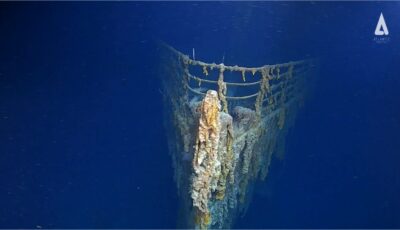The wreck of the Titanic has lain under the Atlantic Ocean since the tragic dates of April 14 and 15, 1912, after she collided with an iceberg. Today, the liner lies at a depth of 3,821 meters in the middle of the North Atlantic, just a few kilometers from where it sank. The wreck was not officially found until 1985, by Robert Duane Ballard on a secret mission for the US Navy. Since then, the liner has remained the object of much fascination…

Titanic may be disappearingThe
These explorations have enabled us to better understand what happened during the sinking. It’s a light that has literally unleashed passions, particularly with the release of James Cameron’s film Titanic.
The wreck of the Titanic now lies in an area covered with debris and objects associated with the ship. Pieces of hull, crockery, objects that belonged to passengers… The front end is still recognizable, though heavily corroded by the ocean and salt. As for the rear section, it’s a different matter: it looks as if it’s been dislocated.
Probably as a result of the impact when the liner hit the bottom as it sank. This is why the wreck is literally cut into 2 distinct parts, separated by 600 metres. When the liner sank, it sank in 2 parts. It broke between the 2nd and 3rd chimneys as it tipped under the water.
This second part is unrecognizable, and not even explorable by submarine. The wreck has collapsed, and corrosion is such that the liner could collapse in on itself within the next few years. The stern, however, is in better condition: its 2 lateral propellers and 2 reciprocating engines can still be seen.
Today, the wreckage of the Titanic is of great concern to historians. The wreck has disintegrated considerably. Natural corrosion, marine micro-organisms, pollution and human exploration are all to blame.
Between 1986 and 2004, its structure was heavily attacked by a bacterium called Halomonas titanicæ. This bacterium is currently eating away at the steel, making the wreck increasingly unstable, ready to collapse in the coming decades.
Scientists estimate that the wreck could simply disappear between 2025 and 2050.